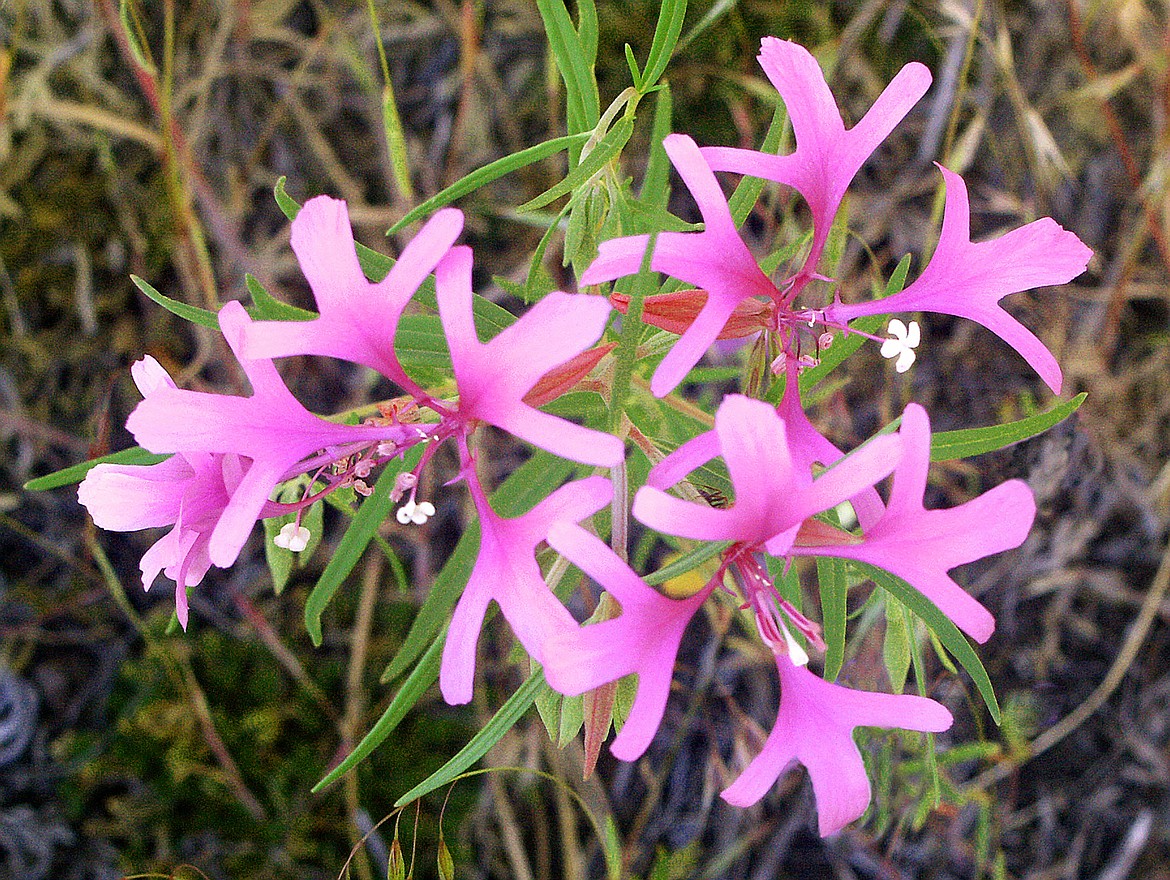Sun-loving Pink Fairies brighten garden
The Lewis and Clark expedition of 1803-1806 discovered hundreds of plants new to botanists of the day.
Pink Fairies (Clarkia pulchella), found near what is now Kamiah, Idaho, was the first plant described in a completely unknown genus, subsequently named after Captain William Clark. Pink Fairies, also known as Ragged Robin, Deerhorn Clarkia or Beautiful Clarkia is one of 41 distinct species in the genus Clarkia. The species name pulchella is Latin, meaning beautiful.
A colorful, sun-loving annual, Pink Fairies thrive in sagebrush prairies, lowland forests, grasslands and disturbed areas in six northwest states and southern British Columbia. Pockets of Pink Fairies have been found, and are considered native, in some New England states. It is more likely, however, they were brought back from the West, as there are no references to them in botanical literature prior to 1806.
Pink Fairies bloom between May and July, creating a carpet of color. The flowers, presented on a short spike, are quite showy and unusual in their make-up. They are symmetrical, with four deeply lobed petals. Each petal has three lobes, the center one sometimes twice as wide as those on the side. The petals are lacy-looking, giving rise to common name descriptors such as deerhorn, ragged and fairy. Although there is some variation in flower color, the characteristic deep pink attracts a variety of pollinators.
From the center of the petals, a white stigma (female flower part) rises on a long style. It resembles a tiny white flower with four petals. It is surrounded by four dark pink anthers (male, pollen-bearing parts) and four smaller white anthers. The fruit, which appears later in the summer, is a nodding capsule resembling tiny okra fruit. When mature, the capsule splits, releasing seeds.
Pink Fairies grow from 4 to 20 inches tall, with rich green blade-like foliage. Individual leaves are long (up to 3 inches) and lance-shaped, with mostly smooth edges. They grow alternately along the stem, one per stem node. Foliage tends to die back as soil dries out and the fruit has set.
Beds of Pink Fairies need well-drained soil and prefer full sun. The plant is not picky about soil quality and is often found in sandy or rocky soil, especially in disturbed areas. Once established, it will reseed, providing outstanding color summer after summer — a nice choice for a meadow setting or informal wildflower bed. Although the plant is drought-tolerant, abundant water will encourage a more profuse bloom.
While there are no known food or medicinal uses for Pink Fairies, gold and green dyes can be produced from the flowers.
Pictures and a description of Pink Fairies are found on page 144 in “Landscaping with Native Plants in the Idaho Panhandle,” a KNPS publication available at local bookstores and the Bonner County History Museum. Additional native plants can be viewed at the North Idaho Native Plant Arboretum, 611 S Ella St. in Sandpoint.
Native Plant Notes are created by the Kinnikinnick Native Plant Society. To learn more about KNPS and the North Idaho Native Plant Arboretum, visit www.nativeplantsociety.org.

